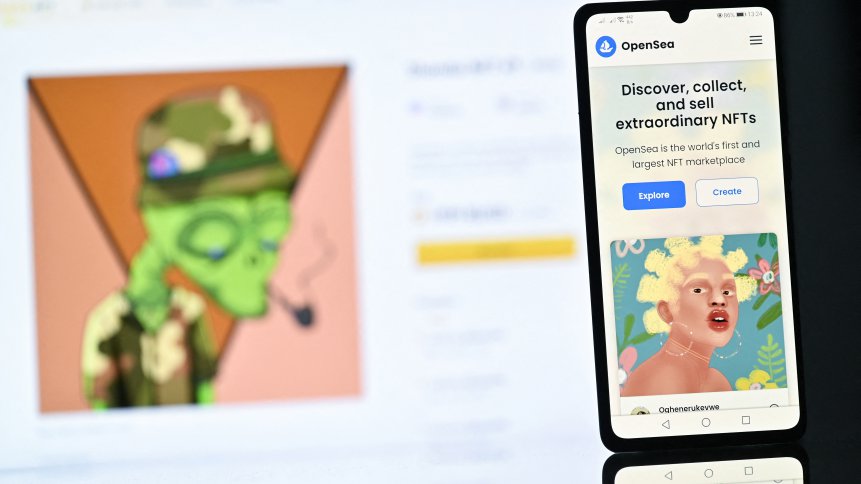
Having captured the public imagination last year – and selected as Collins Dictionary’s 2021 word of the year no less – non-fungible tokens (NFTs) have been taking the global market by storm. From jaw-dropping sales headlines to conglomerates buying land in the metaverse, NFTs have moved beyond the realms of the crypto community and become a term familiar with a growing swathe of traditional businesses. The numbers bear that out: NFTs’ market capitalization grew nearly ten-fold between 2018 and 2020, reaching US$40 billion on the Ethereum network alone last year.
Industry watchers predict that NFTs will continue their rapid ascent, fueled largely by Asia markets. The latter account for about 37% of global traffic to NFT marketplaces – a level similar to Western Europe and North America combined – but with four times the population. Chainalysis data shows that Central and Southeast Asia accounted for over a third (35%) of the US$22 billion in the global trade of NFTs last year.
NFTs digital art scene
As a form of decentralized technology that confers digital ownership rights of intellectual property to the holder, NFTs have had a profound effect on the digital art scene. Apart from shining a light on previously unseen artists, they have opened up opportunities for brands to enter into new creative collaboration partnerships, by tapping into a growing NFT community.
In Malaysia, Volkswagen launched an NFT collection based on its flagship model, in collaboration with new media art collective Filamen. Featuring four unique NFT artwork created by two homegrown artists, the collection was listed for sale on Pentas, a Malaysian NFT platform. Another recent NFT-related local initiative taking place on Malaysia’s Penang Island was an augmented reality (AR) NFT exhibition, where visitors could scan a QR code to view AR sculptures and buy them as an NFT on OpenSea, the world’s largest NFT marketplace.
NFTs can also serve as a perfect tool to mark unique moments of human history in a digital form. Even in crypto-restricted China, where the resale of NFTs is prohibited, they are typically used as digital collectibles to commemorate cultural heritage. Examples include the issuance of NFTs by Chinese museums to mark the Lunar Year of the Tiger, and Tencent’s sale of NFTs featuring digital cave paintings from a UNESCO world heritage site in China’s Gansu province.
Taking the preservation of history to a new level, Hong Kong’s leading English daily South China Morning Post has launched ARTIFACT, a project that aims to commemorate the city’s most impactful historic events on the blockchain. Drawing on the newspaper’s 118 years of archives, the project opens its journalism to decentralized ownership for the first time by tokenizing news assets such as a cover page story, infographic, photo or video clip. The project will be powered by Flow, the same decentralized blockchain that NBA Top Shot was built on.
Expansion Of Business Touchpoints
With global brands now upping the ante by building an emotional connection with consumers across physical and digital touchpoints, NFTs have become part of their marketing arsenal.
Blockchain game distribution platform NEXTYPE recently partnered with Huobi NFT to launch a first-ever NFT collection featuring renowned Japanese actress and singer Hanazawa Kana. It features NFTs modeled after photos from Hanazawa Kana’s personal collection, including scenes showcasing key highlights from her illustrious career. The series will allow fans to own an exclusive form of their idol’s merchandise, while providing gaming benefits on NEXTYPE’s platform.
As our digital identities continue to evolve, the role of digital assets in the form of NFTs will continue to grow. Hence, businesses that manage to establish groundwork today will gain a competitive edge in the future of virtual realities and identities.
What’s next for NFTs?
With more Asian companies entering the space, the NFT market is poised for huge growth. We believe that the current market size is only a fraction of what’s actually possible with NFTs, and expect to see more use cases across gaming, media, enterprise, and more in the near future. A caveat to note is that while NFTs confer cryptographically verifiable ownership, there is no global system in place that ensures ownership of the underlying item before minting. As such, individuals still need to exercise the same caution and vigilance as when they make online transactions or trade any digital asset. This point was brought home in the recent phishing attack reported by OpenSea which cost its users $1.7 million in
stolen NFTs.
Nonetheless, NFTs continue to stand out as a key trend to watch in the fast-moving crypto industry, based on their track record of disrupting industries and their potential to revolutionize many more in the future. With NFTs straddling the intersection of so many closely watched industries – art, fashion, media, entertainment, finance, and more – their development looks set to be an exhilarating journey. And the ride’s only just started.
Article contributed by Du Jun, Co-Founder, Huobi Group









